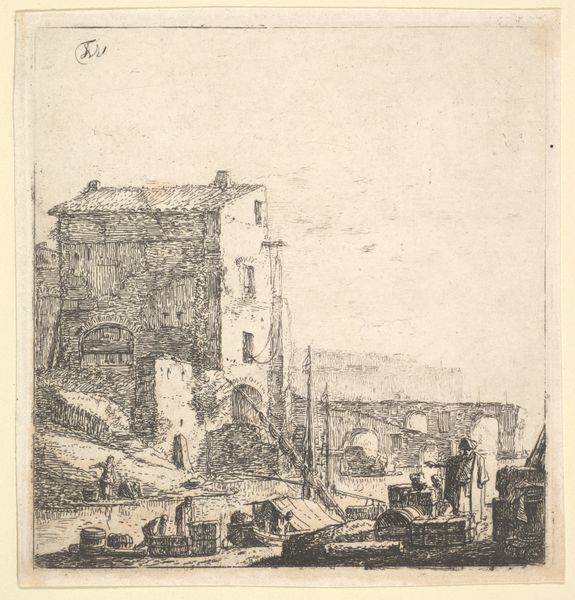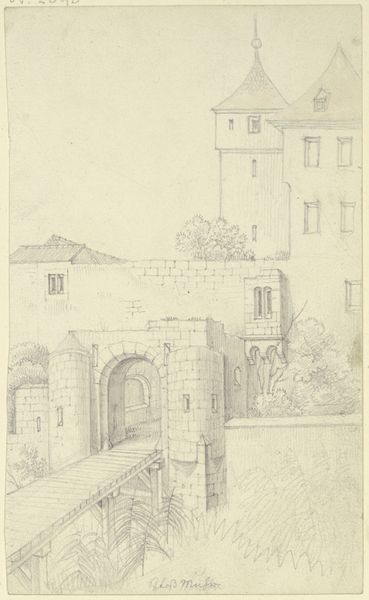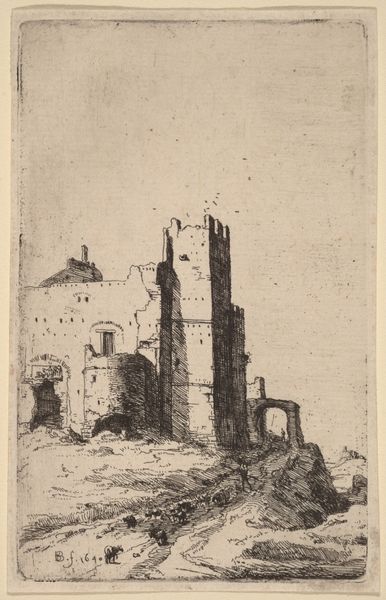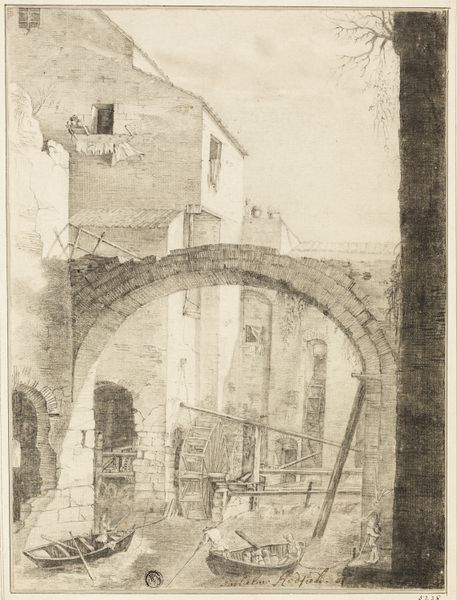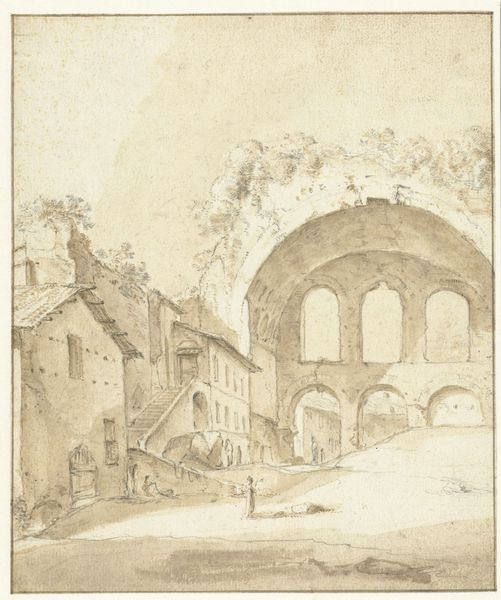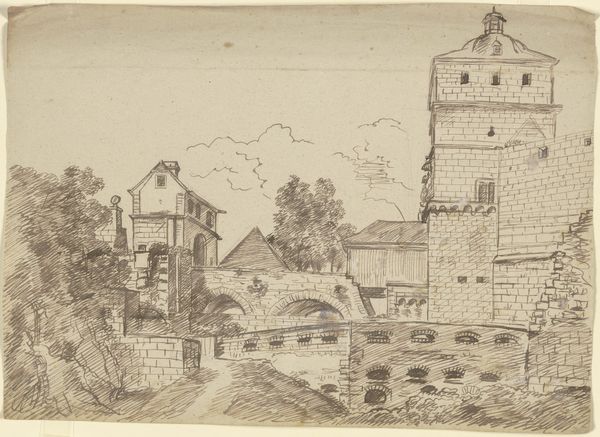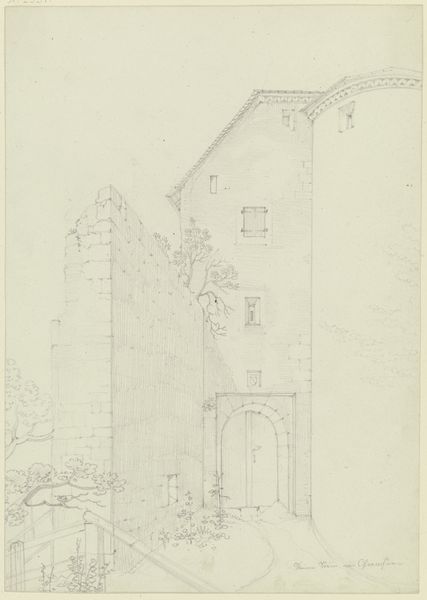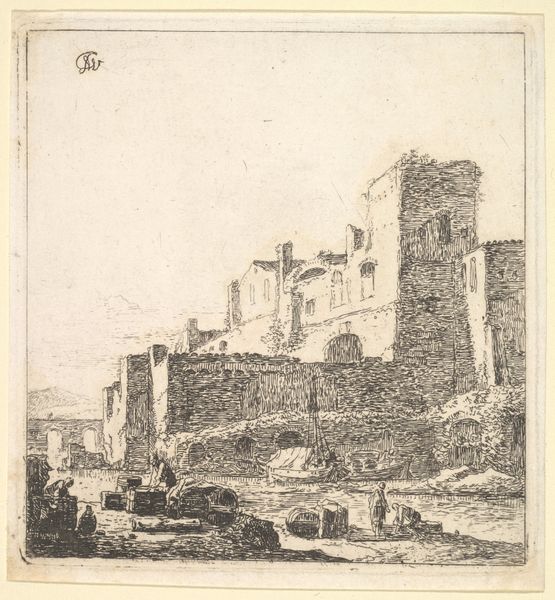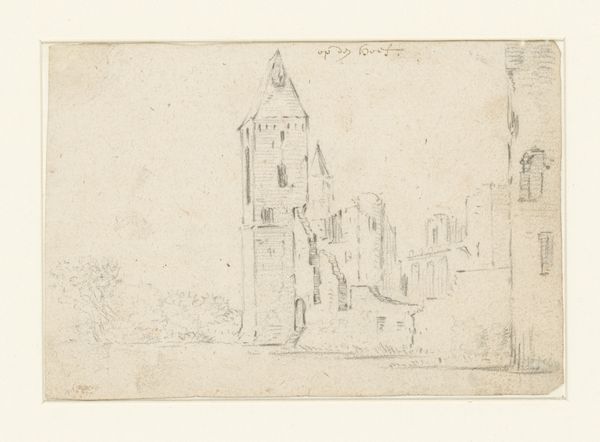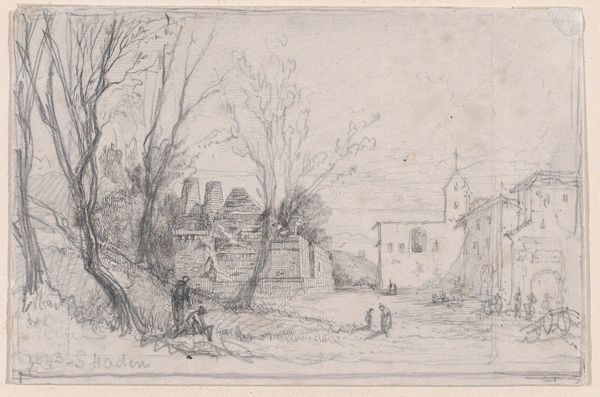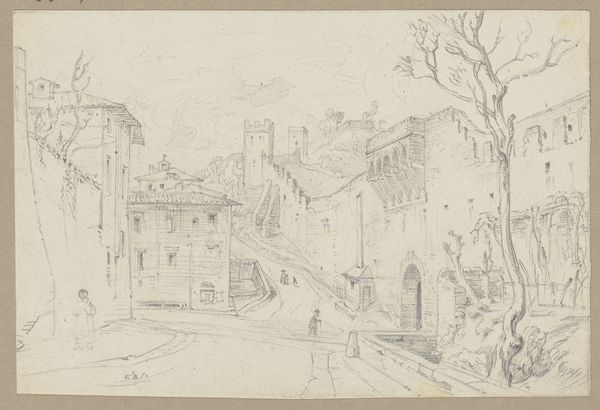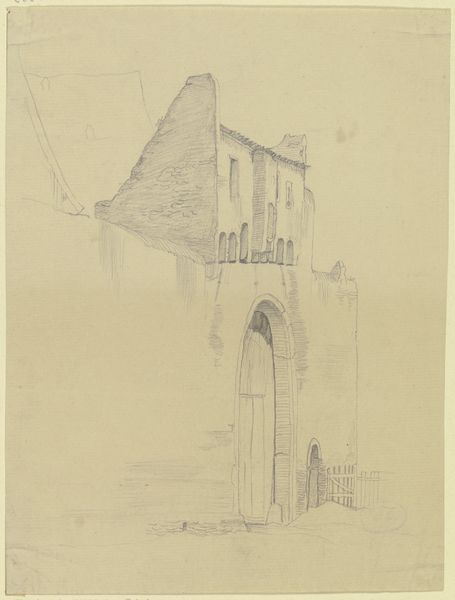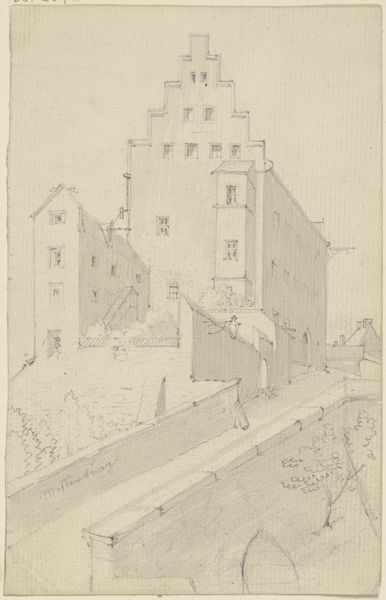
drawing, pencil
#
architectural sketch
#
drawing
#
baroque
#
pencil sketch
#
landscape
#
form
#
pencil
#
cityscape
Copyright: Public Domain
Editor: Here we have "Ruinen am Wasser, vorn ein Kahn mit einem Ruderer", a pencil drawing by Simon de Vlieger. It's quite delicate, depicting ruins by the water. What catches my eye is the contrast between the solid architecture and its dilapidated state, really gives it a melancholy feel. How do you interpret this work? Curator: It's fascinating how de Vlieger uses ruins. Beyond the aesthetic appeal, in 17th-century Dutch art, ruins often served as potent symbols. Consider the social and political climate; The Netherlands had just gained independence after a long struggle. Editor: So, the crumbling buildings could be symbolic of the recent war and societal changes? Curator: Precisely! But it's more complex than simple decay. They also signify the passage of time, the transience of human achievement, and perhaps even a subtle critique of worldly ambition, echoing a common sentiment within certain Calvinist circles, influential at that time. Also, think about who would have viewed this drawing; it would likely be wealthy merchants or civic leaders. What message do you think a depiction of crumbling ruins might send to them? Editor: Perhaps a reminder of humility or the impermanence of their own wealth and power. I never thought of it that way before! Curator: Exactly. And remember the rise of Dutch maritime power at the time. A ruin suggests something prior, hinting at cycles of rise and fall of empires. A subtle caution, perhaps. Editor: That’s a very compelling point. I will look at similar works now with this in mind. Curator: Remember to also explore other works from this time period to look for related political undertones and to help broaden your understanding of art as a cultural artifact.
Comments
No comments
Be the first to comment and join the conversation on the ultimate creative platform.
